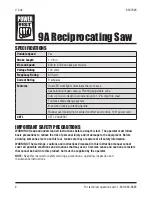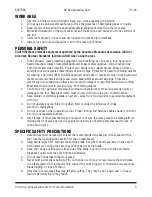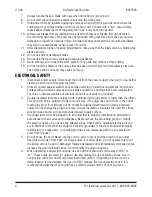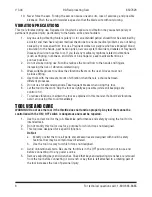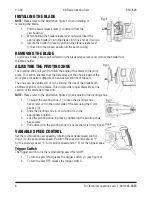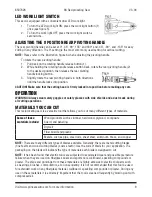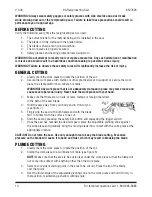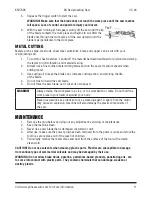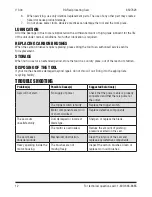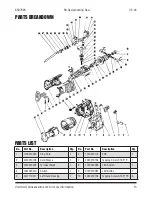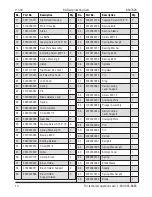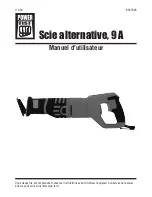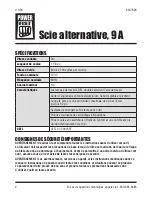
10
For technical questions call: 1-800-665-8685
V 3.04
8507626
9A Reciprocating Saw
WARNING! Always wear safety goggles or safety glasses with side shields and a dust mask
while blowing dust out of the reciprocating saw. Failure to take these precautions could result in
permanent eye or lung damage.
BEFORE CUTTING
Verify the following every time the reciprocating saw is used:
1. The correct blade for the material being cut is installed in the saw.
2. The blade is firmly clamped in the blade holder.
3. The blade is sharp and in good condition.
4. The work piece is properly secured.
5. Safety glasses and hearing protection are being worn.
WARNING! Do not attempt to modify tools or create accessories. Any such alteration or modification
is misuse and could result in a hazardous condition leading to possible serious injury.
WARNING! Failure to observe these safety rules will significantly increase the risk of injury.
GENERAL CUTTING
1. Clearly mark the work piece to locate the position of the cut.
2. Secure the work piece with clamps or other practical ways to support or secure the work
piece to a stable platform, workbench or table.
WARNING! Any work piece that is not adequately clamped in place may come loose and
cause severe personal injury. Never hold the work piece with your hand.
3. Make sure that there are no nails, screws, clamps or foreign materials
in the path of the saw blade.
4. Hold the saw away from your body and in front of you
(see figure 7).
5. Firmly grip the saw with both hands and with the blade
NOT in contact with the surface to be cut.
6. Start the saw by pressing the safety lock button and squeezing the trigger switch.
7. Once the saw has reached the desired speed, place the adjustable pivoting shoe against
the work piece and gradually bring the moving blade into contact with the work piece at the
appropriate location.
CAUTION! Do not force the saw. Use only enough force to keep the blade cutting. Excessive
pressure on the blade will cause it to bend and twist, which may result in breaking the blade.
PLUNGE CUTTING
1. Clearly mark the work piece to locate the position of the cut.
2. Clamp the work piece to a workbench or table (see figure 8).
NOTE:
Make sure that the area to be cut is clear under the work piece so that the blade will
not come into contact with anything other than the work piece.
3. Select a convenient starting point in the area to be cut out. Place the tip of the blade
over that point.
4. Rest the lower edge of the adjustable pivoting shoe on the work piece and hold it firmly in
that position, maintaining a shallow cutting angle.


